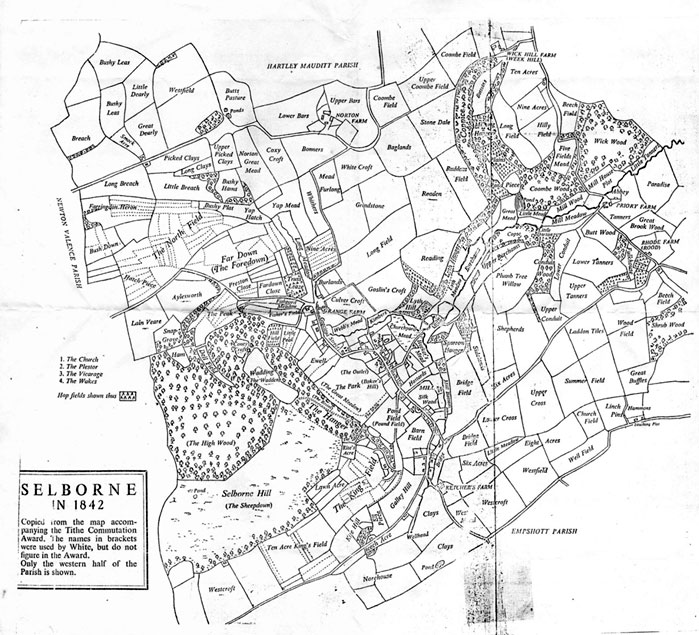The major lineaments of the Selborne landscape are determined by geology, and the human imprint is relatively minor, even considering the extensive but small scale chalk and malmstone quarrying over the past few hundred years. The human contribution is to the vegetation taken as a whole, with the presence of woodlands, meadows, heaths and arable fields. There is evidence of settlement within the parish from the Early Mesolithic with radiocarbon dates ranging between c. 7300 – 6800BC at Oakhanger. Bronze Age, Roman, and Anglo Saxon sites surround the area evidencing long episodes of, or perhaps continuous, habitation. There are 30 registered Archaeological Sites in and immediately around the village, which also has 49 listed Historic Buildings. We are fortunate that much of our landscape has remained unchanged since the earliest habitation, due mainly to the Hangers being too steep for cultivation.
Many old field patterns remain, as do the original names and our surveys use these names wherever not superseded by modern ones. The same applies to the various woodland areas. The 1842 tithe map is still a valuable source.

Our recent village history is relatively well documented, with publications ranging from “The Natural History of Selborne” by Gilbert White, published in 1789 as the world’s first true natural history book, right up to the recently published history of Selborne, “Knights Priests and Peasants” by local historian and geologist Dr Edward Yates published 220 years later.

